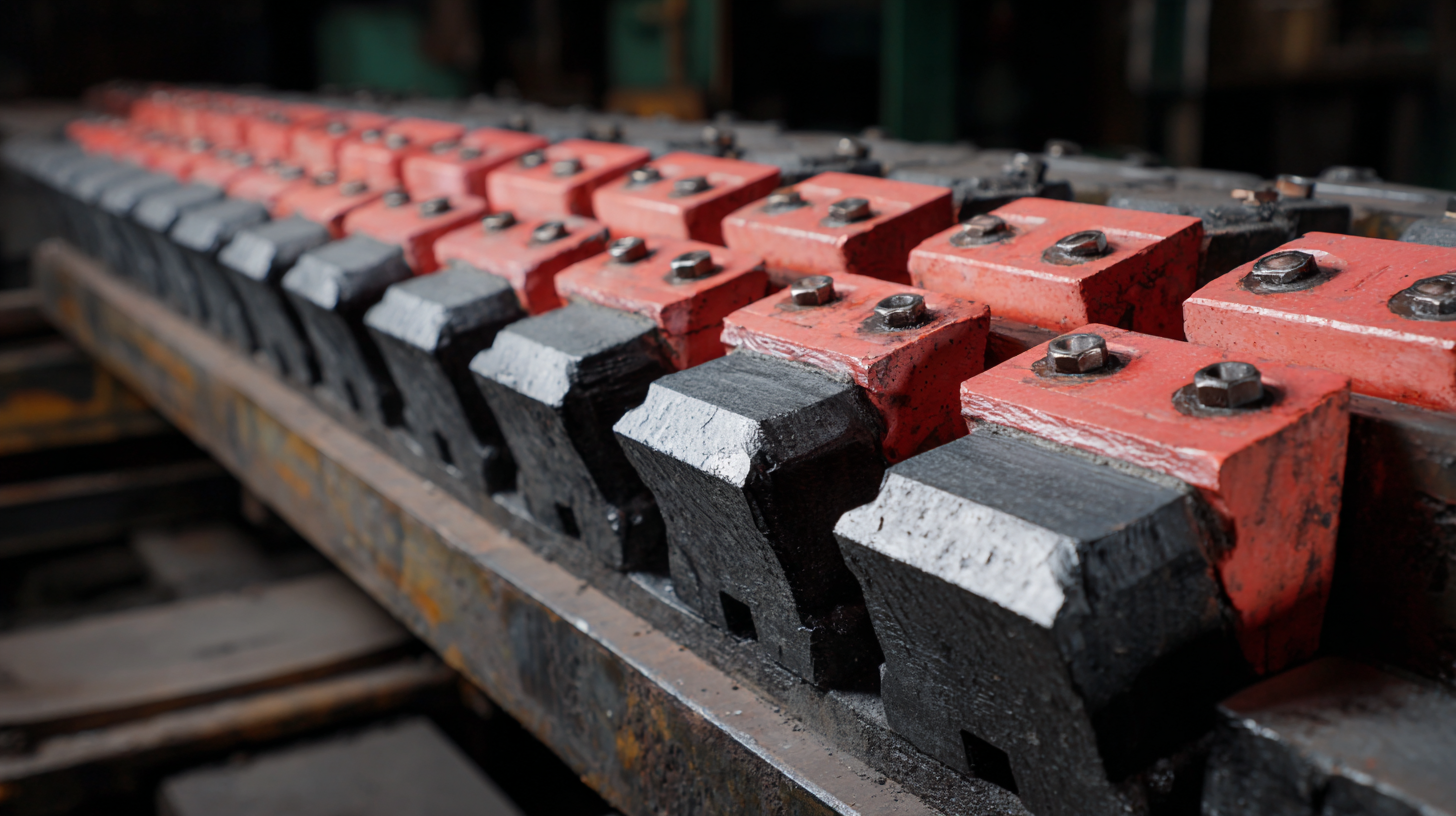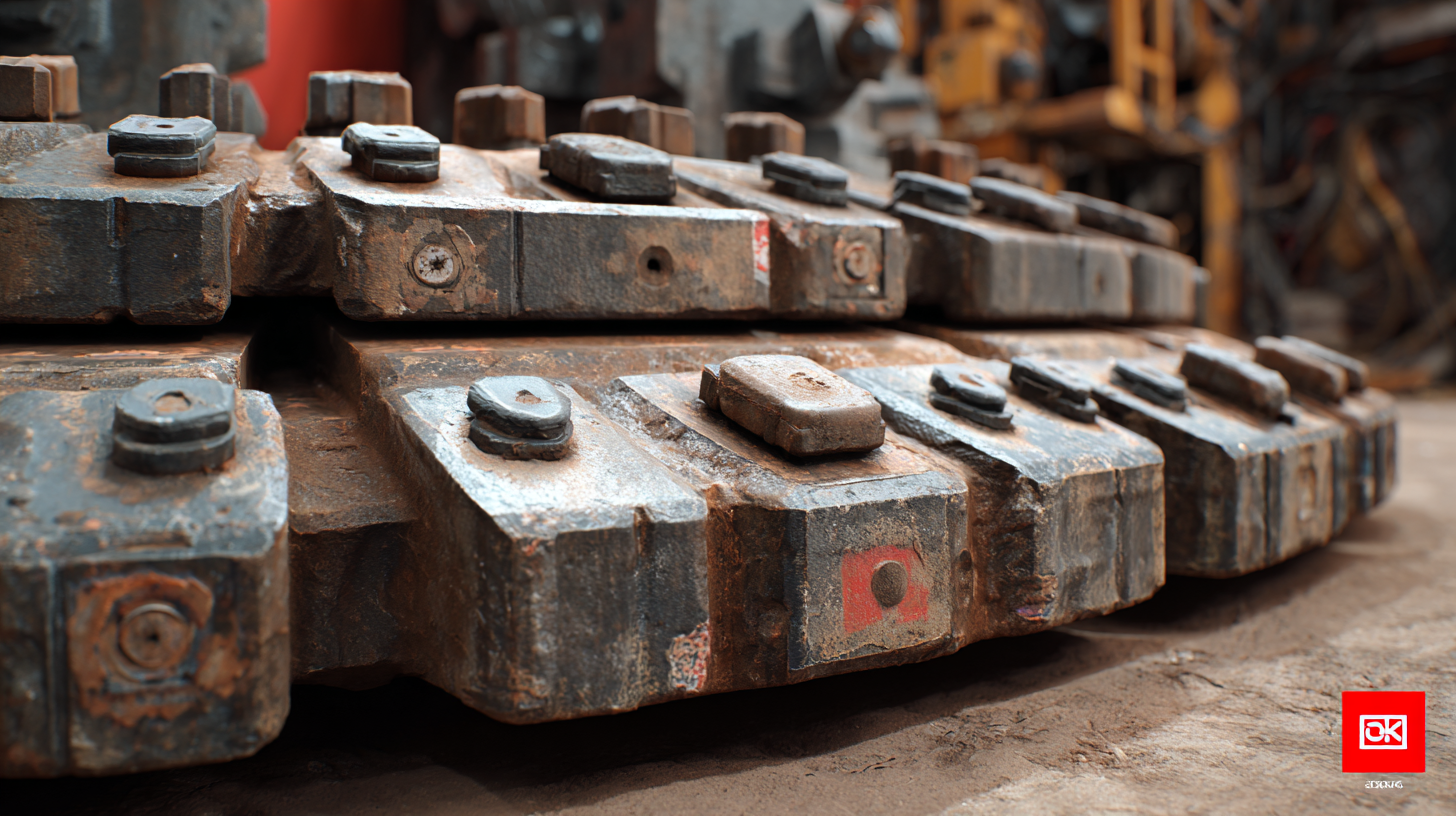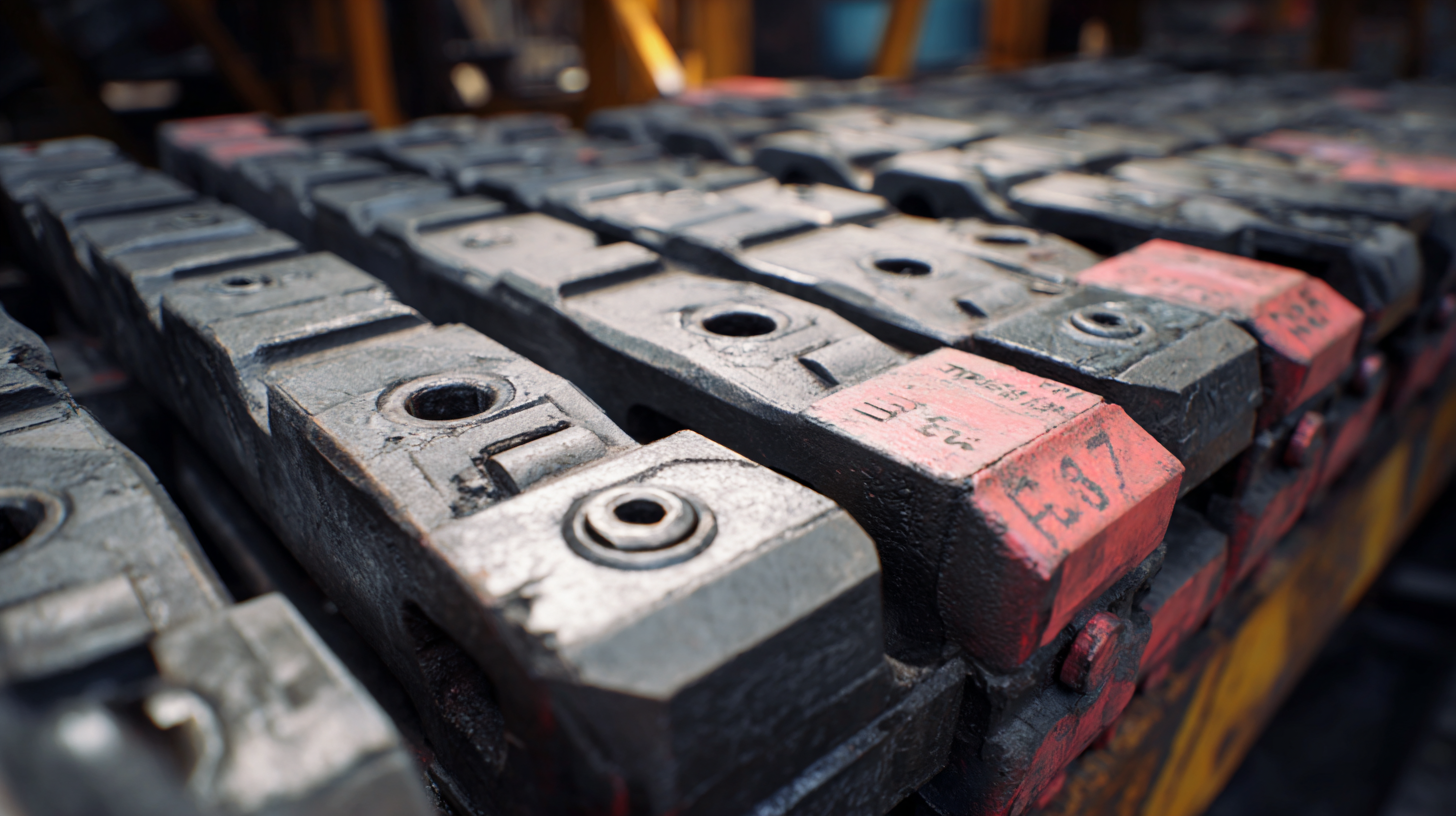In the mining industry, the efficiency and durability of equipment are paramount, and one critical component that significantly impacts operational performance is the Mining Machinery Jaw Plates. According to a recent report by the Global Mining Equipment Market, which projected the market to reach USD 112.3 billion by 2026, the demand for high-quality jaw plates has surged. Industry standards dictate that these components must withstand harsh conditions, including heavy wear and tear, while providing maximum crushing efficiency.
 Research indicates that high-quality jaw plates can enhance production rates by up to 30%, leading to cost savings and increased profitability for mining operations. As mining companies adopt advanced materials and technologies to meet these standards, understanding the implications of jaw plate quality and performance becomes essential for maintaining competitive advantage in this rapidly evolving sector.
Research indicates that high-quality jaw plates can enhance production rates by up to 30%, leading to cost savings and increased profitability for mining operations. As mining companies adopt advanced materials and technologies to meet these standards, understanding the implications of jaw plate quality and performance becomes essential for maintaining competitive advantage in this rapidly evolving sector.
Quality jaw plates play a pivotal role in the efficiency and longevity of mining equipment. In the harsh and demanding environments of mining operations, jaw plates are subject to extreme wear and tear. High-quality jaw plates are designed to withstand these challenges, ensuring optimal crushing performance and minimizing downtime for repairs. The materials used in manufacturing jaw plates significantly influence their durability and effectiveness, making it essential to adhere to industry standards that prioritize quality and resilience.
Furthermore, the impact of quality jaw plates extends beyond just operational efficiency. They contribute to the overall safety of mining machinery. Poor-quality jaw plates can lead to equipment failure, resulting in potential hazards for workers and costly disruptions to mining operations. By investing in high-quality jaw plates, mining companies not only enhance productivity but also create a safer working environment. Thus, understanding and prioritizing the importance of quality jaw plates is crucial for the success of any mining operation.
| Parameter | Standard Value | Importance |
|---|---|---|
| Material Type | High manganese steel | Ensures high resistance to wear and deformation |
| Hardness | HRC 50-65 | Increases longevity and performance under heavy loads |
| Crushability Index | Minimum 85% efficiency | Directly affects the equipment's productivity |
| Design Specifications | OEM Approved | Ensures compatibility and reliability with mining equipment |
| Weight | Varies by model; typically 200-600 kg | Affects overall machinery balance and operation under stress |
| Manufacturing Tolerance | ±0.5mm | Critical for fit and performance standards |
When it comes to mining machinery, particularly jaw crushers, the quality of jaw plates is paramount for efficient operations. Key material properties that contribute to the durability of jaw plates include hardness, toughness, and resistance to wear. High-quality jaw plates made from materials with optimal hardness levels can withstand the constant impact and abrasive conditions typical in mining environments, leading to longer service life and reduced downtime.

One important consideration is the balance between hardness and toughness. While harder materials may resist wear better, they can also become brittle. Therefore, it's essential to choose materials that maintain a good level of toughness, allowing the jaw plates to endure impact without fracturing.
Tips: When selecting jaw plates, consider conducting a thorough analysis of the material properties to optimize performance. Additionally, regular inspections can help identify wear patterns and enable timely replacements, ensuring that your jaw crusher operates smoothly without interruptions caused by worn-out components. Furthermore, leveraging efficient design approaches, such as optimizing the swinging jaw plate, can significantly enhance productivity and reduce operational costs in the long run.
The manufacturing standards for jaw plates in mining machinery are crucial in ensuring optimal performance and longevity. High-quality jaw plates are typically made from wear-resistant materials like manganese steel, which can withstand the aggressive nature of mining operations. According to the latest report from the International Journal of Mining Science, using jaw plates manufactured to ISO 9001 standards can increase operational efficiency by up to 30%. This highlights the significance of adhering to established manufacturing protocols.
To ensure the best performance of jaw plates, it's essential to evaluate their hardness and tensile strength. Tips for buyers include requesting comprehensive metallurgical reports and ensuring that the manufacturer utilizes advanced casting techniques. Engaging with suppliers that follow ASTM standards can guarantee that the jaw plates meet industry benchmarks for quality and durability. Furthermore, regular inspections and maintenance can significantly extend the life of these components, reducing overall operational costs.
Another critical factor is the design of the jaw plates, which should align with the specific application and type of material being processed. Research from the Mining Equipment Manufacturers Association emphasizes that optimized jaw plate geometry can enhance the crushing efficiency by 15%, making it imperative for companies to engage with manufacturers that can customize designs based on rigorous industry standards.
Maintaining the longevity of jaw plates in mining machinery is crucial for ensuring efficient operations and minimizing downtime. One of the top maintenance practices is regular inspection. Performing thorough checks on jaw plates can help identify any signs of wear and tear early on. This allows for timely replacements or repairs, preventing costly breakdowns.

Another essential practice is the proper lubrication of the jaw plates. Adequate lubrication reduces friction and wear, extending the life of these critical components. It's important to follow manufacturer recommendations on lubrication intervals and types of grease to use. Additionally, always ensure that the lubrication system is functional and clean to optimize performance.
Lastly, operator training plays an integral role in the maintenance of jaw plates. Well-trained operators can effectively monitor the machinery and adhere to best practices during operation, preventing undue stress on the jaw plates. Conducting training sessions that focus on equipment handling and maintenance techniques can significantly enhance the lifespan of jaw plates and contribute to overall operational efficiency.
Emerging technologies in jaw plate production and design are transforming the mining machinery industry, catering to the increasing demand for higher efficiency and durability. Recent studies indicate that advanced materials, such as high-manganese steel and innovative alloys, are now standard in the manufacturing of jaw plates. According to a report by the Mining Materials Association, the introduction of these materials can enhance wear resistance by up to 30%, resulting in significantly longer operational life and reduced maintenance costs.
Furthermore, additive manufacturing, commonly known as 3D printing, is gaining traction in the design of jaw plates. This technology allows for the creation of complex geometries that traditional manufacturing methods cannot achieve, enabling better fit and function. A report from the International Journal of Advanced Manufacturing Technology highlights that employing 3D printing in jaw plate production has led to a 25% reduction in waste material and shortened lead times by approximately 40%. These innovations are pivotal as they not only improve productivity but also align with sustainability goals in the mining sector, demonstrating a promising horizon for the industry.



